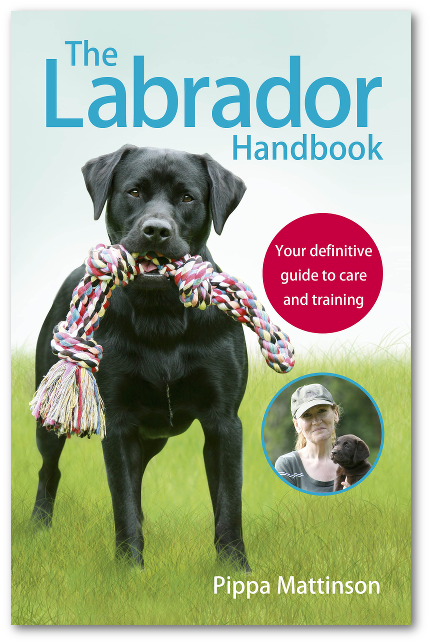Whippet Lab Mix – The Whipador
There is no doubt that Whippets and Labradors are two of the very best pet dogs you can find. Labradors will always have my heart, but Whippets are a close second.
I’ve grown up with the loyal, dependable Labrador Retriever. They are intelligent, focussed, and loyal to a demanding fault. Whippets are less clever, harder to train, but, and don’t let the Labs hear me, they are also quite a bit more fun. And, for a racing breed, considerably easier to live with too.
There is a lot to be said for the idea of combining a purebred Whippet with a pedigree Labrador. But, the realities of life with a Whippet Lab mix are incredibly varied. You can’t merge the two personalities into the perfect bundle. How they emerge in a Whippet Lab mix puppy is unpredictable.
- The impact of their origins.
- How Whippet Lab mixes vary in temperament.
- Racing genes vs boxy bodies.
The Whipador is a very desirable designer dog because it promises a relaxed, intelligent and easy to groom companion. But this isn’t necessarily what your Lab Whippet mix will grow up to become. Even in terms of their coat!
Patience vs Drive
Whippets are still very popular working dogs, especially in the North of England where they were developed. Their whole purpose in life is the thrill of the chase. In pet Whippets this can transfer into a keen ability to fetch, or a less desirable interest in destroying your neighbor’s cat.
Labrador Retrievers have split into two defined types, but they are all from the same original sporting stock. They didn’t need to have the same insane acceleration as our Whippet buddies, but they did still need to be driven.
Labs are focussed on the retrieve to the extent they can plough through fields, swim through streams and dive through thickets to reach their game goal. Only to bring it all the way back again without breaking a sweat.

The main place Labs and Whippets differ in their historic purpose is in the Lab’s need to wait. Working dogs, especially those that were developed to be used for Field Trials, must quietly and patiently sit beside their handler until they are called upon. They don’t fetch on instinct, but instead in response to a command.
Field Labs take direction from handlers through hand signals and whistles at a huge distance. They work in cooperation with humans, unlike Whippets that only really need to do their job on instinct.
Your Whippet Lab mix will therefore range hugely in terms of prey drive, tolerance for waiting, and ability to learn quickly to follow your commands. All dogs are trainable through reinforcement, but some are easier to teach than others. You won’t know which your puppy is until they are an adult dog.
Temperament Traits
Whippets are enthusiastic, whether that’s about sticking their tongue in your ear or chasing across the horizon makes no difference. My Whippet bestie is delighted every time I go over to visit him (and that’s a lot). He never fails to make me feel like the most important person in the world, and I’m NOT a direct member of the family, just a close friend.
Our Labrador dogs are very similar in terms of devotion to the people they love, but it extends a little more towards the general population too. Especially with those from show rather than working lines. You can therefore be pretty confident that your Whippet Lab mix puppy will grow into a friendly adult dog, provided they are well socialized before they are three months old.
You’ll read a lot of places that Whippets are quiet dogs vocally, but this is not my experience. They are as chatty as the next dog, whining, barking and moaning to themselves when there is something they want. Or just to greet you when you get home. Labs have the same tendency towards breaking the silence, but both breeds, and the Lab Whippet cross of course, can be taught to keep the noise down using gentle clicker training methods.
Associating With Other Pets
Labrador Retrievers tend to be pretty good with other pets, especially when introduced in puppyhood. Through a few sessions on a long line and with a pocket full of treats I have Labrador puppies happily ignoring our resident rabbits, guinea pigs and even backyard chickens.
Whippets are much harder to acclimatise to other pets, and will show some level of excitement at their presence even if well trained to physically leave them alone. You can also get your pet Whippet used to your own kitten, only to have them attempt to take down next door’s cat as they saunter past without a second thought.
If you have lots of other pet animals in and around the home, a Whipador dog isn’t a guaranteed good companion for them any more than your average Whippet would be.
Whippet Lab Mix Structure
There are variations in Whippador build, but perhaps not as much as you’d think. They tend to be the expected level, slimmer than a Lab but not as skinny as a Whippet.
Most Whippet Lab mixes have single coats, but this isn’t a given especially as you move into second of third generation crosses. This matters in terms of grooming requirements, and how often and heavily your dog will shed.
The colors are hard to predict. Tan or black Whippet Lab mixes are the most common, but just because you buy a black Lab Whippet mix doesn’t mean your puppy will have a dark coat. Genetics are complex, and vary hugely in both breeds between the block colors of the Lab or brindling or the Whippet.
What you can be confident of is a dog with a fairly long, slender muzzle and cute tipped ears.
Avoiding Unmatched Expectations
Every new puppy owner has a set of expectations, whether you realise it or not. There are images and ideas in your head that you want to become a reality when you bring your new canine companion home.
One of the hardest things to deal with is not having your expectations met by a big life change. So if you are bringing home a Whipador puppy in the near future, just know that you could have a dog very much like either of their purebred parents. If you love Whippets and Labradors, and you find a good ethical breeder, you can’t really go wrong.

Free Labrador Updates!
Get my training tips, news, reviews, and the latest from The Labrador Site delivered to your inbox



I really need to find a whippet and black lab mix because my ruby got hit by a car Tuesday and I’m desperately needing to find another one like her please someone help
Hi. I just wanted to say big thank you for your great article. I am looking to adopt a dog and found the most useful information from your article. Thank you. Gulia
Hi I have adopted a whipador and he is neutered and 8 years old. How many calories should he be fed daily if moderately active?
It is a mix breed and not a good mix at that. Whippet yes, have a Lab, no way.
We adopted “Tootsie” from the local animal shelter when she was 8 months old. She is 2 now and looks like a chocolate Lab only half the size (45 lbs) of a typical lab. She has whippet tendencies (tucks her tail, doesn’t shed, needs to be walked daily and loves being off the leash). Likes kids and other animals, very loyal, hardly ever barks and only growls when she hears a noise at night. She is a great companion.
Our 1st was Dixie. She looked Lab except in her abdomen and slightly smaller profile, longer legs. That girl could spring 5ftup from standstill. And excited, she would run circles we called scootering. Playful, gentle,loved boats, water, kids, she was amazing.
Just adopted our 2nd, Remy who is 4. A bit smaller, leaner, long legs. But she has the sleek seal head, ears small and lie flat. Most expressive eyes.
I’ve found our whippets are not as hyper as expected. And good cuddlers, bit lazy. That’s ok we are older. Remy sees me struggle on stairs and comes back to wait for me. Intuitive and kind, we love her already.
We have a three year old and love her personality—she loves her family and select friends but is not trusted around children. We accept that she’s a hunter whether it’s watching for squirrels or deer. She loves shredding Spanish moss, as if to demonstrate exactly how she’d finish off a squirrel given the chance. Having sight hound in her explains her ability and desire to sit patiently in hopes of spotting her prey. And she’s fast! She must have a champion bloodline because she likes nothing more than showing off her speed with giant loop de loops, and other times thundering by, thoroughly enjoying the galloping sounds she makes. Billie is a cuddler, this is what we love most about our little girl.
I’ve had our rescued Luna for 1 year now and we got her at 2 months old. Since she was 3 old I’ve taken her to the soccer field and throw the ball as hard as I can for 20 min straight. She brings it back every time, and has the freedom to run away at her will. She is good with larger dogs, smaller dogs, on leash, and off leash. She jumps on happy people, but not kids or people who ignore her. Hands Dow the best dog I’ve ever owned, and we leave her home uncrated sometimes up to 8 hours straight. The worst thing she ever did was eat a piece of mail, and chew a stick on the couch. An absolutely amazing animal for under 18 months whipit lab mix.
I have had one five years and he is the joy, very sweet and very friendly. He was also very easy to train. I would love to have another one.
I fostered a whipador for a month and it turned out to be a disaster. The dog had to be put down due to too high prey drive and attacking small dogs around my home. I personally wouldn’t have one.